We have previously discussed Edward Hall's concept of proxemics—which is the study of human interactions and communication within a physical space. Hall put into words what we all know and experience on a constant basis: individuals require a certain amount of space in which to function, and react in predictable ways when those space expectations are violated. The amount of physical space required varies situationally, as well as culturally. Observing proxemic behavior provides insight to a photographer about the subject, and also allows better timing of moments.
Vogue-level style on the streets of Paris, with a nod to Bruce Gilden.
Left out of Hall's discussion is the psychology of fashion. How we dress is a projection to the world of our individual needs and defenses, as well as our perspective on those who might observe us. Fashion psychology is complex.
The most studied aspect of how we dress is the impression we communicate to others. We interpret levels of competence, status, and power based on what someone is wearing. The way we dress also sends messages about our character and mood. According to clinical psychologist Linda Blair, in just three seconds we form immediate impressions of others based on the style, fashionability, and attractiveness of the clothing they wear. It follows that our behavior and how we respond to others (e.g. helpfulness or aggression) is also affected by the impressions we form.
Stylish men enjoy tea in Istanbul, Turkey.
A lesser studied aspect of dress is the psychological and physical affects of clothing on the wearer. The relationship between physiological and sensory systems with cognition is well established: body posture, and perception of warmth, for example, affect mood and attitude. In the emerging field of "enclothed cognition," both symbolic and physical aspects of dress are found to affect the wearer. As designer C.H. Verhoeckx puts it, "clothing is about attitude."
The stylish woman in the yellow hat gets her own serenade in Prague from a group of guys dressed to support their style of music.
The clothes we choose affect how we carry ourselves, our mood, our feeling of confidence, and how we will interact with the world. This happens on two levels: 1) what we perceive and intend the clothes to symbolize to the public; and 2) the personal experience of the way one dresses, in terms of self-evaluation and the very physical sensation of wearing clothes.
Sometimes street style is about what we don't wear. (At Sacré-Cœur, in Paris.)
Applying this knowledge to photography, what's important to understand is the difference between "style" and "fashion." "Style" is personal while "fashion" is not. Unfortunately, this distinction is too often overlooked, with the concepts of "style" and "fashion" conflated into the same thing. They're not.
Fashion Photography is not about the model
Most discussions of fashion photography emphasize the importance of lighting, locations, make-up, and hair styling. For photographers, there is a seemingly endless market of strobes and light diffusers, with an equally endless supply of tutorials on methods of highlighting all that hair and makeup. Lost in the discussions is the most important point: fashion photography is not about the model.
Fashion photography has nothing to do with models. Fashion photography is not portraiture. Instead, it's all about featuring a particular piece of clothing or accessory, and showing how each piece fits into the theme of the collection as a whole. Everything else—including the model—is in support of showing the life of the fashion creation. Making the model the central point of a fashion photograph draws the visual attention to the wrong subject, and makes for very confusing imagery.
Fashion photography is difficult because it requires the photographer (and, if there's a budget, the creative director, art director, make-up artist, etc.) to think about the life of the collection rather than the life of the model. Choosing moments which highlight the drape, movement, and functionality of a fashion piece is a different kind of looking. (In our next article, we will look more closely at fashion photography.)
Style is about the person
Exploring the world of proxemics can't be done very well through fashion photography, because fashion is about the designer. When we want to look at how clothes make an individual feel and how individuals choose to relate to the world around them, the answer lies in looking at style.
A stroll in a flowing dress and a backpack could be a tourist—but more likely is just a Parisian, out for a look at La Madeleine.
Without a focus on a collection, the "fashion" we see on the street is more properly thought of as a "style"—an individual expression of many different elements. Instead of a "look" being in support of a particular fashion piece, individuals (in a proxemic way) mix and match different pieces to achieve particular purposes and needs. Street style is about the "model," because the fashion choices tell us about the individual's character in a way similar to a person's use of proxemic space.
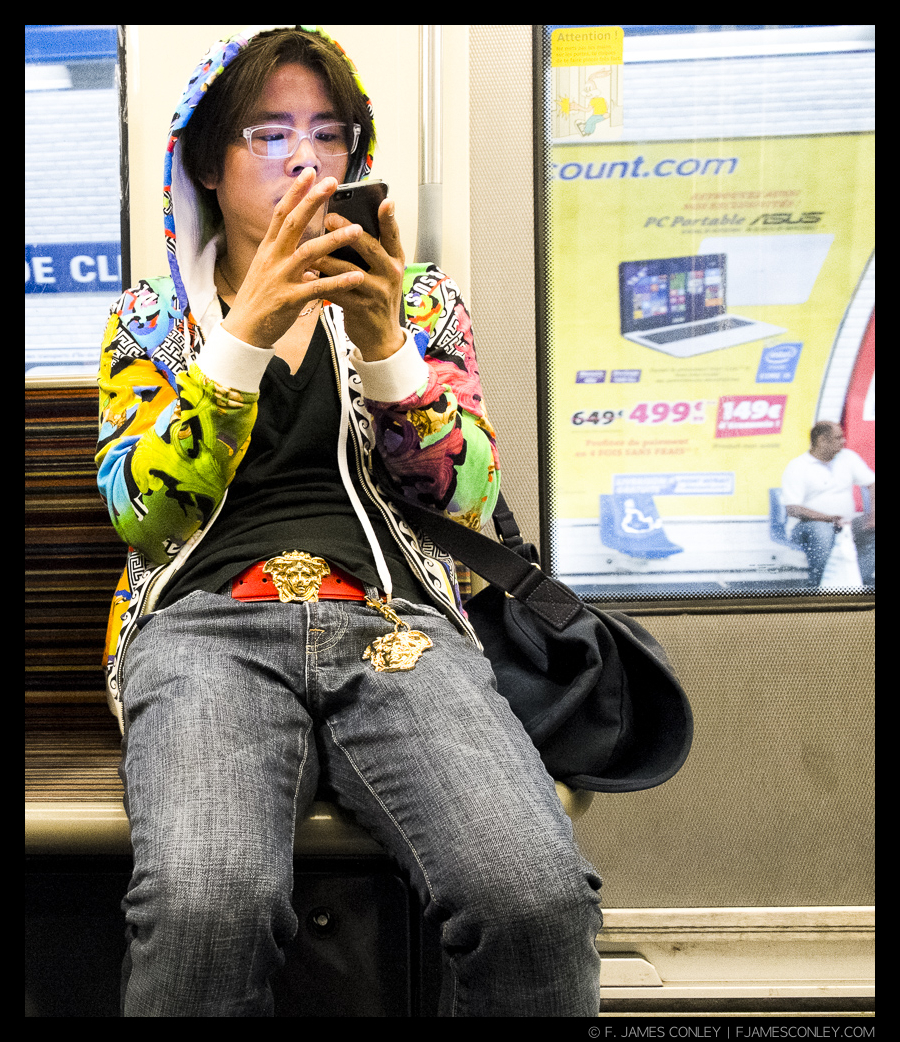
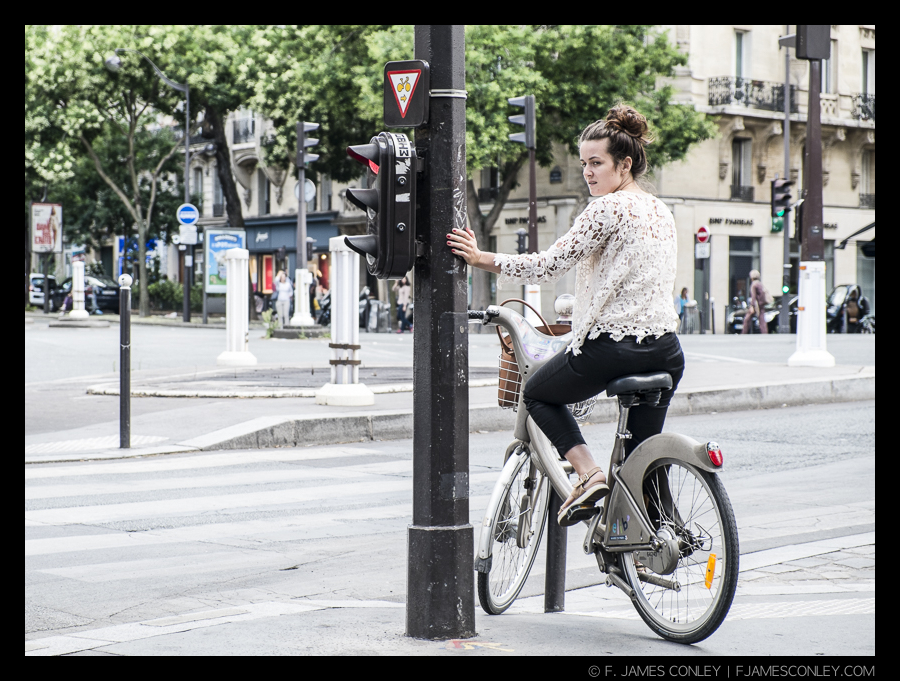
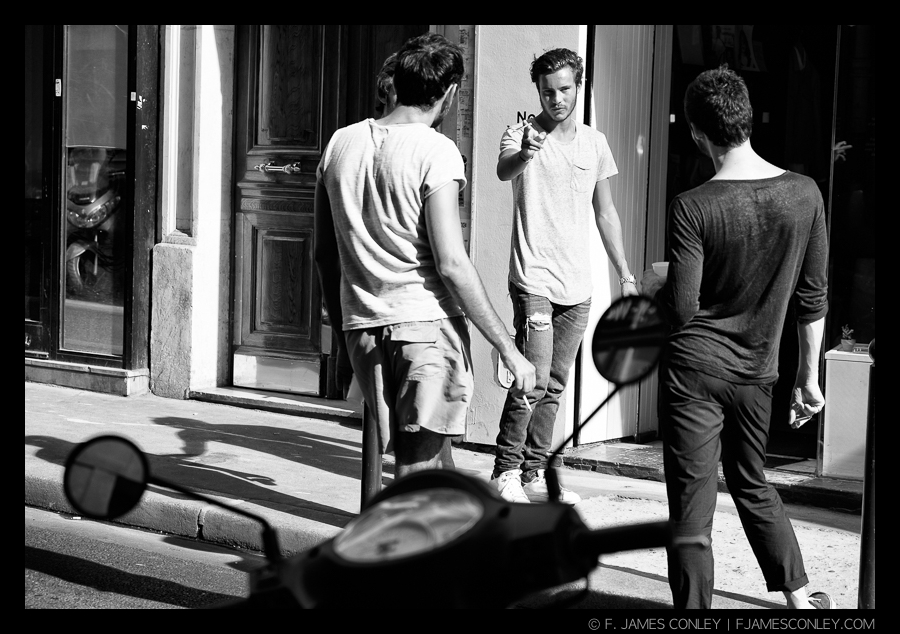
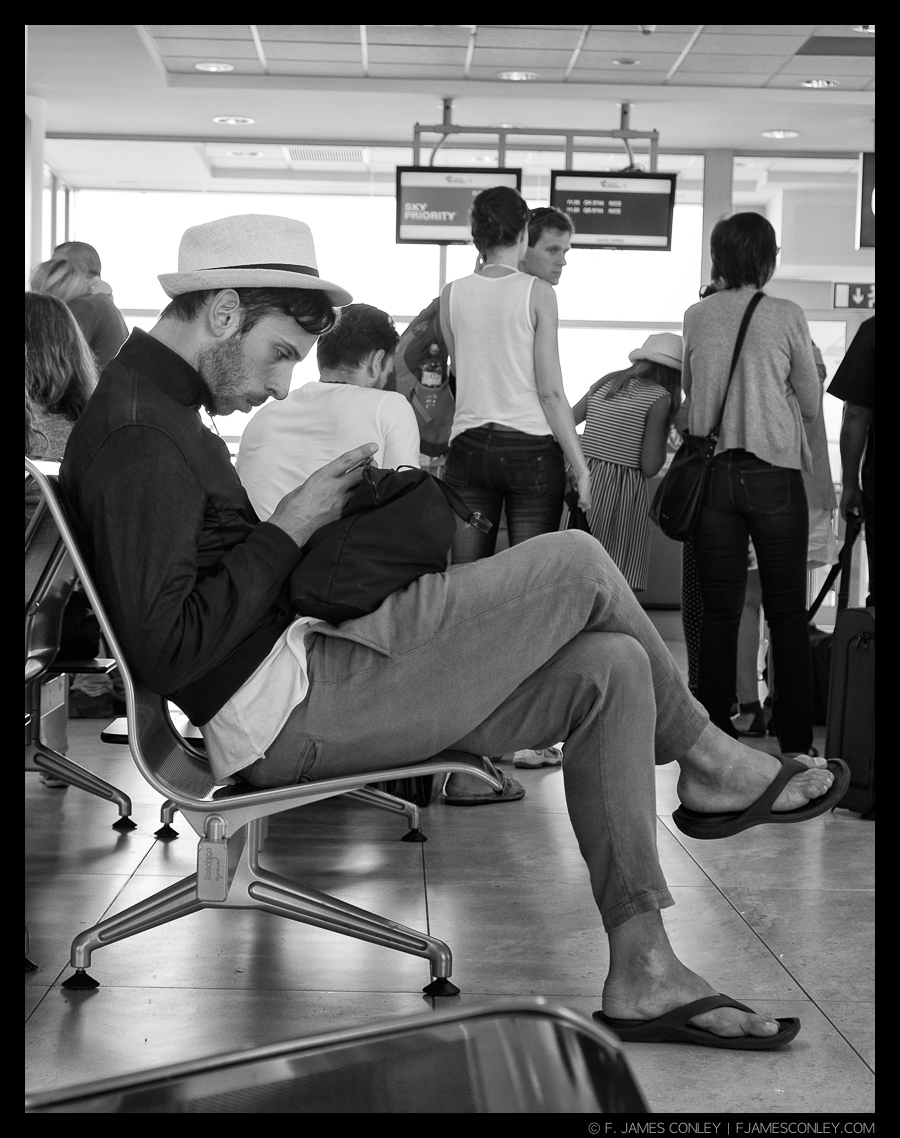
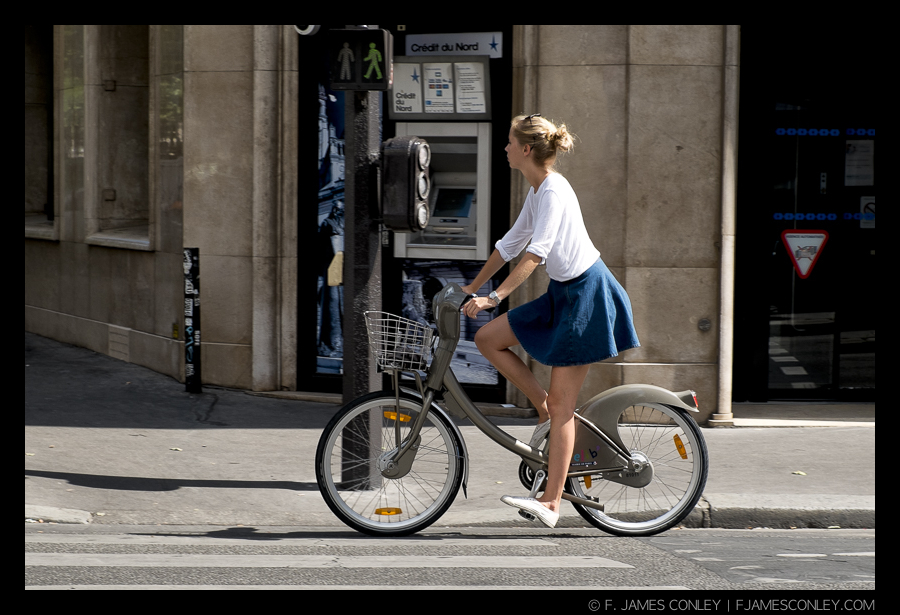
While proxemics can be categorized into rough conceptions of use-space which can provide for quick and reliable methods for anticipating decisive moments, style choices are not only culturally specific, but time sensitive. Reading cues and clues from the style of the day is no easy task, but it's immensely rewarding. What we choose to wear is an intimate communication to the world which can say quite a lot if you know what to look for, and it can be especially informative if you're in an unfamiliar place.
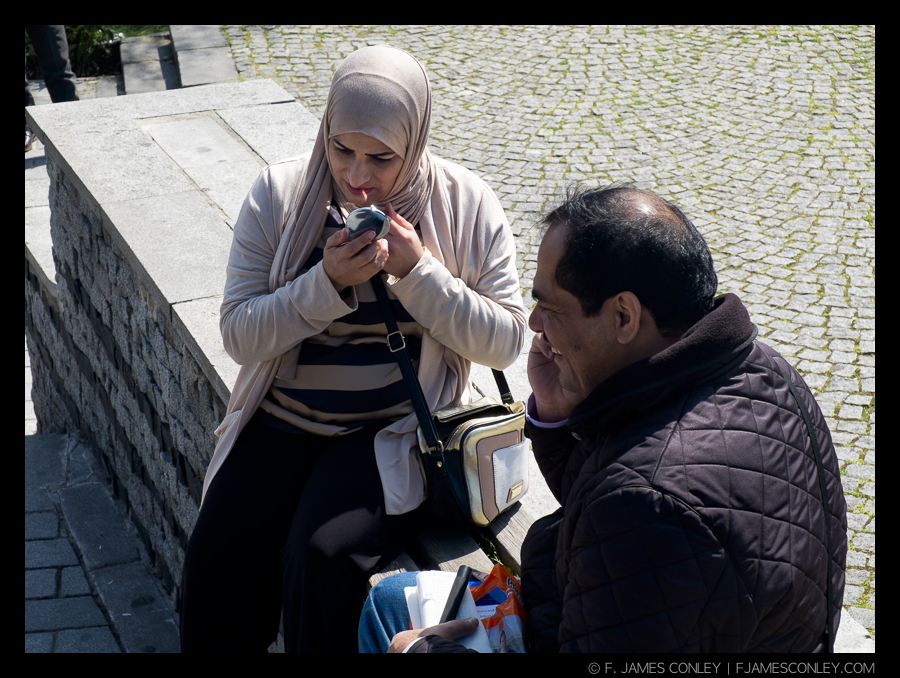
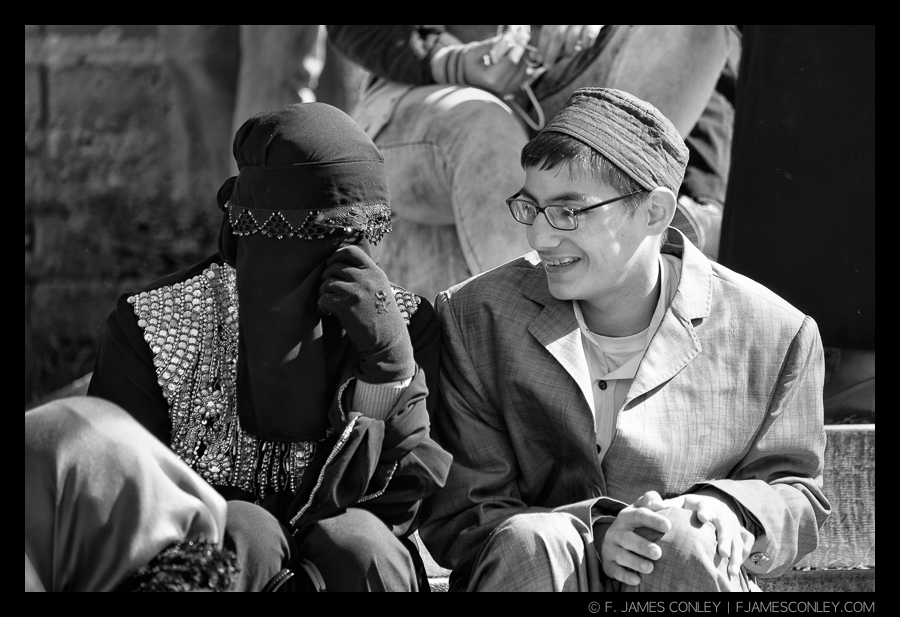
Sizing up style
Start your quest to observe street style with a few guidelines which are generalizable:
- Outfits fit occasions. As a general rule, people dress with a purpose. What dress fits a particular cultural purpose may or may not be immediately apparent, but you'll soon start to see the patterns of dress matching patterns of behavior.
- Look at the shoes. Shoes can be a huge clue about a person's values. Are they polished dress shoes, or well-worn boots? Do the shoes fit the scene, or do they look made for another environment? Shoes are quick way to evaluate where someone is headed, and what they might be doing when they get there.
- Accessories for the moment. Things like pursues, handbags, and backpacks provide revealing information about a person's present activity and how that person wants to be perceived. Is the handbag Chanel, or is the backpack army surplus? Is the person going on a trip, or just a run to the bakery? The bag can tell you.
A mix of style approaches, from tourist shorts, to locals dressed for a night on the town in Paris.
Other things to observe are hairstyles, piercings and tattoos, and even whether the person is chewing gum. If you haven't been watching for these things before, you'll be surprised how they all form a complete package: a package we call Street Style.